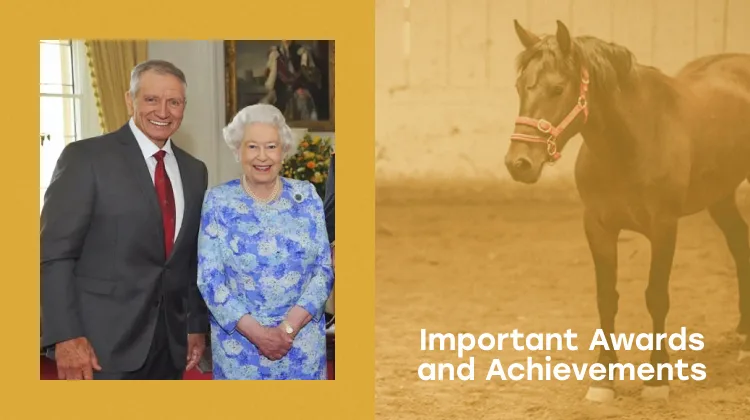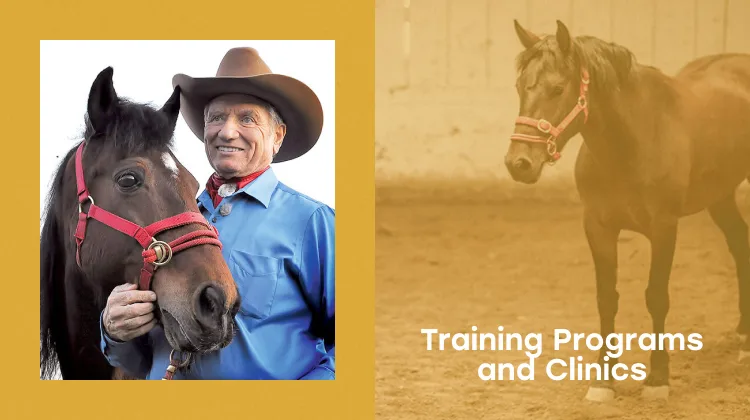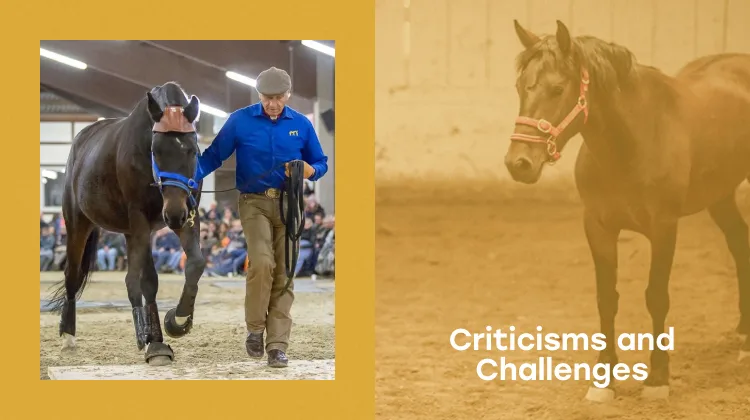Early Life and Background

Monty Roberts, the legendary horse trainer he became spent most of his early life as a child around horses. Monty, a horse-mad boy in California (and so was his Dad — he trained horses) grew up to be Monty. Having seen the stereotypical, sometimes brutal techniques employed to train horses, he was convinced there had to be a gentler way. Knowing from years of observing wild mustangs in the Santa Ynez Valley, that they communicated without words, it only made sense to sit quietly nearby and observe what they were doing. Cause this is a conceivable realization within the archetypal flight animal data fill you are trained to 10/23.
Monty spent his early years with horses, which eventually brought him to create the now-successful training techniques in which horse and rider have more of a genuine partnership. Instead of spending hours quietly observing who for millennia has been the sort of traditional dominants making their charges cringe in fear rather than attempt to communicate at a non-frightening variety level, he recognized horses as nature born flight animals. In the meantime, this understanding as well as his holistic observation skills inspired a fundamental concept of natural horsemanship, which was later developed into his famed Join-Up. It was Monty’s enduring curiosity about how horses think, combined with his belief that horses should be loved but never pushed beyond their limits, that became the foundation of a philosophy which would make him a household name in equestrian circles worldwide.
The Join Up method from Monty Roberts

One of the biggest contributions that Monty Roberts has made to the world of horse training is called Join-Up. A myofascial release technique born from the deep knowledge that comes from mutual respect and trust with free roaming horses, emphasizing silence and non-verbal modality At the heart of this philosophy is Join-Up, which is Monty’s foundational method for cultivating a relationship with horses in the belief that they respond more favorably to kindness than vice. It gives us a certain body language that horses can understand, and that makes them secure to be willing to engage in the game of training with us.
This concept of a round pen environment where the horse decides to participate or not, forms the basis of the Join-Up process. Trainer speaking & as a result, they exert particular methods, to put up together with preferences of the entire body and function actions into the horse and thus start controlling your relationship between you along with all the horse within cooperation & devoid of any power or infliction. However, unlike the more dominant style of horse training that has persisted for a decade or so now, much of Join-Up is gentle encouragement to spend time in silence and learn confidence building exercises with the horse. Roberts adjusts to the personality of each horse he works with and allows them to determine what place they will take up within a herd — by listening. None roberts believes how animate or wild the equine is claim to be this has been readied anywhere.
First published in 2005 as How to Join Up with Your Horse, The Complete Guide to Join-Up by Monty Roberts is the book that has helped spread this world-famous technique further across the globe than any other and change lives–both of horses and their riders. The horse becomes in history referred to a the willing partner of its rider and this method emphasizes humane leadership in horses. Monty encourages trainers to train gentler created horses by letting go of the brakes of Join-Up where humans and horses experience it together as partners.
Important Awards and Achievements

Monty Roberts has done a great deal in his life and is famous in the horse world. He changed/directed humane horse training to a point that the way people relate/add to horses around the world was started by him. Naturally, over the years he has developed a method of horsemanship that seems to be everything Wild Mustangs empathy and respect that can be perceived by the general public — an American horse trainer who embodies these ancient art forms of mustang whispering if you will He is probably most famous for creating his unique Join-Up techniques – which landmark natural horsemanship by demonstrating a method of compelling a horse to join you in your space and accepting leadership on the basis of communication rather than control.
Among Monty’s biggest achievements is his relationship with Queen Elizabeth II. As a horsewoman herself, the queen realised Monty was onto something revolutionary and invited him to Windsor Castle to show how he worked with her family and equestrian team. The queen was so taken by that joy in Monty┬Аа, she supported his work and went on to further promote his techniques. And the fact that he has been embraced by British royalty considers him one of the best introduced hoof trainers in history, all over America and right now moreover inside England and around the globe. Monty received an honorary doctorate in recognition of the over 50 years he has spent developing humane horse training, just to honour his contributions.
Also Mrs. Roberts set up Monty Roberts International Learning Center, The Learning Center is an educational facility that centers on practising the principles taught not only by Monty himself but also other areas of humane horsemanship. This learning centre has since turned us into a destination for aspiring trainers, professional riders and horse amateurs worldwide. Learn from Monty and his instructors through hands-on experience with horses, and discover which horse training methods are effective & learn to understand the foundations of natural horsemanship. Monty’s work has helped trainers across the globe treat him like one of the most authoritative figures in equine training watching wild mustangs due to the courtesy he encourages between horses and humans.
Monty Roberts’ Books and Media Appearances

Monty Roberts has spread his message in several books, through appearances on radio and television, and in demonstrations live at various venues around the world. His most famous book, “The Man Who Listens to Horses,” is colloquially known as the original natural horsemanship best seller. This book — part autobiography, part training philosophy guide — charts his progress from boyhood to international fame as a trainer. It turned into an international bestseller, familiarising readers everywhere with the phrase “the real horse whisperer”, and demonstrating the profound power of humane, effective horsemanship.
Monty not only has many books published under his name, but he has also had his face featured in a wide range of documentaries and television programs. This exposure via media appearances has enabled him to grow effective horse training his audience, showcase how he operates and promote a rationalisation around his training methods. Backed by his wealth of experience, Monty gives horse owners and trainers the tools they need to work with their horses through resourceful instructional videos and live demonstrations. His media presence has added to the popularity of the Join-Up method, promoting a win-win good horse trainer situation for horse and trainer.
His books and videos are still helpful to readers who want to learn more about humane horsemanship. Monty left a legacy of information that was not just about him, but lessons for horse trainers in the future, freely given in different formats. He is still an influential figure in equestrian publications and media today, inspiring many to see horse training through a lens of compassion and respect feral horses interact.
The Science behind the Techniques of Monty Roberts
The Science Behind Monty Roberts Training Methods Monty Roberts has a firm foundation in equine behavior and psychology that informs his training methods, balancing the line between science and practical training. The horse is an animal that flies, by nature and instinct (and should always be treated as such). And this is how he approaches the basis of his method. Over time, Monty learned to observe the way mustangs and feral horses interacted with each other and understood a great deal about the body language of these animals. He believes that horses always give the trainer a better way and that if one learns to read their body language then training can take place in a safe manner.
Much of Monty’s non-verbal, gentle approach to training has been supported by research in equine behavior. Most feral horses interact standard methods depend too much on forcing the horse whereas Monty’s techniques have been created to respect a huge amount of the horse as an animal providing space for boundaries without threat. In the years since, studies on animal psychology have demonstrated that virtually all animals — including horses — learn more effectively in a positive, non-threatening environment like Monty always believed was better than fear-based training monty roberts instructors.
The Join-Up method specifically, has received attention for its effects on horses’ psyches. This way of training respects freedom through forcing horses only to approach him when they want, which can lead to trustful, easy partnerships. Monty is compassionate and true to nature in how he trains yet also backed up by science; this gives the horse and rider an honest partnership. His humane training philosophy recognizes that horses are sentient beings capable of communicating and his techniques provide an evolutionary standard in equine behaviour & training.
Monty Roberts Training Programs and Clinics

The training programs and clinics offered by Monty Roberts are a fundamental element of his overall initiatives to promote humane and effective methods of training. His programs held at his Flag Is Up Farms in California draw students from across the globe, and range from new trainers to experienced equestrians. The training courses are designed for various levels of experience, covering novice courses as well as lessons for more advanced drivers. Both programs offer experiential learning in Monty’s methods, such as the Join-Up technique, and are designed to immerse you in scientific equine behavior.
Montys clinics focus on effective theory but have a distinct emphasis on practical, hands-on training techniques which foster a cooperative horse/trainer relationship. Attendees see Monty working in real time, demonstrating the techniques he will present. Of course, these all tie into demonstrations where you are then learning about how important it is to read a horse and adjust your body language accordingly. Participants learn to interact with horses using body language, honing their skills in working with these animals. Monty-trained instructors guide the participants while building their confidence to use Monty’s methods quintessential flight animal.
Participant responses have been very positive, with many commenting on the depth of Monty’s programs and their transformation professionally and personally. Make no mistake, these events are far more than simply how to train your horse; they are philosophically based in a respecting partnership, and attendees love it. Monty is the ultimate in horseman and classroom, offering the best timing to take what Monty does with horses and turn it into your own space with them! These programs keep Monty’s memory alive and inspire a new generation of trainers in the art of natural horsemanship.
Criticisms and Challenges

While Monty Roberts’ “Join-Up” methods are internationally admired, the equestrian industry contained critics. Monty has certainly been criticized by conventional trainers and classical practitioners, who like to ask whether what Monty does is actually good for horses in the long run. His Join-Up method, based on communicative interaction and a respect between equine and handler has been criticized for its un-adaptability in a show ring which tends to necessitate more harsh submission from the horse. SJW: Well some of these trainers have a tendency to favour more regimented training practices rather than Monty’s less rigid methods, saying that he is too laid back for some disciplines.
Monty of all people would have an answer to that, which he has never wavered from: you need at least a modicum of knowledge about how horses think and learn. He does not think that you scare the horse into submission, but rather develop a relationship with it. The argument Monty makes is that horses trained compassionately and with respect become willing, confident partners. He also insists that much of the criticism arises from failure to understand his method stating that Join-Up is not designed to supplant all traditional practices, but rather function as one more alternative which emphasizes the horse’s instinctive behaviour.
However many trainers and horse-people who appreciate his free approach based on compassion have been moved by Monty’s methods even if some are sceptical. The steam of Griffin’s influence on traditional training practices has begun to expand further conversation about horse-training ethics that have made many practitioners rethink their own methods. Monty Roberts remains committed to sharing a more humane approach despite the criticism from traditionalist trainers. His conviction has made a host of people see training with a deeper understanding of horse behaviour quintessential flight animal.
His Legacy and Its Influence on Modern Horsemanship

The legacy Monty Roberts left behind in the field of horsemanship is remarkable when it comes to humane training practices. His focus on being respectful and understanding towards the horse and communicating with it non-verbally resulted in a global transformation in the way many animals are trained. Monty has developed the concept of natural horsemanship, which is now a fundamental principle in many training programs, emphasizing methods based on empathy and trust rather than dominance.
Other trainers and equine professionals have adopted some elements of Monty’s philosophy, illustrating the influence of his work. There are plenty of trainers trained by Monty, using a Join-Up like method then blending it with whatever else they know to create trainer styles designed for the good of the horse. Through his work with the Join-Up International program, he has opened eyes to how humane training can be applied to both horsemanship settings as well as equestrian sports and therapy programs, not to mention rehabilitation programs for at-risk youth and incarcerated youth. Monty’s legacy, however, goes beyond training and has ignited wider discussions on animal welfare and the need for humane horse treatment in the equestrian world.
Monty Roberts has also influenced natural horsemanship, where his contributions have garnered him recognition as an early figure. This outlook has inspired trainers around the world to consider what horses need psychologically, shifting them towards more responsible and caring practices. Monty, as he formed a flying distance in the natural horsemanship field, never one to take all the credit of course, has certainly done his contribution and so he became a past for some surprising and inspiring ways that remain as legacies linked with him.
Conclusion
Monty Roberts has forged a career in the horse world over his lifetime that has influenced how horses are worked around the globe. Monty Roberts has redefined what it means to be an effective, humane horse trainer from those days of starting using the wild horses in the high desert and beyond. He revolutionized how so many trainers and riders view horses with his non-verbal Join-Up method based on respect, which promotes a relationship-based approach to horse. Monty has become a natural horsemanship pioneer, and also an integral part of the larger equine community through his work.
In the future Monty is definitely going to continue making a mark in the area of training. The Monty Roberts International Learning Center and his many training programs guarantee that trainers of the future will be trained to use humane methods. Thanks to Monty, we’ve now got a blueprint for trainers wishing to take the kinder route, and his methods will be relevant for many years ahead. Monty Roberts continues to inspire professionals and horse owners alike, and the legacy of humane horse training that this compassionate horseman pioneered will live on for generations to come; a testament to the belief that understanding and respect between species is not only possible but profoundly transformative for horses, humans, or any other species lucky enough to receive either!

